Does Full-Body Massage Include Privates? Clear Answers for First-Timers
When you book a full-body massage, one of the first questions that pops into your head is: Does this include privates? It’s a natural concern-especially if you’ve never had one before. You want to relax, feel cared for, and not end up in an awkward situation. The good news? In professional settings, full-body massage does not include private areas. Ever. Not in a legitimate spa, clinic, or licensed massage therapy practice. This isn’t a gray area-it’s a strict ethical and legal boundary.
Think of it like going to the dentist. You don’t expect them to examine your private parts just because you’re there for a checkup. Same logic applies here. Licensed massage therapists are trained professionals who follow clear guidelines to keep you safe, respected, and comfortable. Their job is to ease muscle tension, improve circulation, and help you unwind-not cross lines.
If you’re new to massage or unsure what to expect, this guide breaks down exactly what happens during a full-body session, what’s off-limits, how to set boundaries, and how to choose a trustworthy spa. No fluff. No judgment. Just clear, practical info so you can walk in feeling confident.
Understanding the Basics of Full-Body Massage
Origins and History
Massage has been used for thousands of years across cultures-from ancient China and Egypt to Greece and India. The Greeks used it to treat athletes, while traditional Chinese medicine incorporated it into healing rituals. Modern Western massage, as you know it today, evolved in the 19th century with Swedish techniques developed by Per Henrik Ling. These methods focused on muscle manipulation for health, not intimacy.
Today’s professional massage therapy is grounded in anatomy, physiology, and ethics. Licensing boards require therapists to complete hundreds of hours of training, including strict protocols on draping, consent, and boundaries. The goal has always been healing, not anything else.
Core Principles or Components
A full-body massage typically covers: back, neck, shoulders, arms, hands, legs, feet, and sometimes the head and scalp. The therapist uses oils or lotions to reduce friction and glides their hands with controlled pressure-light for relaxation, deeper for muscle relief. You’re always covered with a sheet or towel (called draping), and only the area being worked on is exposed. The rest stays tucked away, private and secure.
Therapists are trained to work around sensitive zones without ever touching them. Even the glutes (which some people assume are “private”) are only worked on if you specifically request it-and even then, only with proper draping and consent.
How It Differs from Related Practices
It’s easy to confuse massage with other bodywork services. Here’s how a professional full-body massage stands apart:
| Practice | Key Feature | Primary Benefit |
|---|---|---|
| Full-Body Massage | Professional, draping, no private areas | Relieves muscle tension, reduces stress |
| Erotic Massage | Focuses on arousal, often lacks draping | Sensual pleasure (not therapeutic) |
| Thai Massage | Performed on floor, clothes on, passive stretching | Improves flexibility, energy flow |
| Couples Massage | Two people in same room, same techniques | Shared relaxation experience |
Notice the difference? A licensed massage is clinical in its approach-focused on your physical well-being. Anything else is not massage therapy. It’s important to know this so you don’t accidentally walk into a place that misrepresents itself.
Who Can Benefit from Full-Body Massage?
Almost everyone. Whether you’re a busy parent, a desk worker with tight shoulders, an athlete recovering from training, or someone dealing with chronic stress-massage helps. It’s not just for the wealthy or the wellness-obsessed. Studies show massage can lower cortisol (the stress hormone) and increase serotonin and dopamine-your body’s natural feel-good chemicals.
People with anxiety, insomnia, or muscle pain often see the biggest improvements. But even if you’re just looking to unwind after a long week, a full-body massage is a simple, effective way to reset.
Benefits of Full-Body Massage for Your Body and Mind
Stress Reduction
When you’re stressed, your muscles tighten. Your breathing gets shallow. Your nervous system stays on high alert. A full-body massage signals your body to switch from “fight or flight” to “rest and digest.” The rhythmic pressure, warmth, and touch activate the parasympathetic nervous system. Research from the National Institutes of Health shows massage therapy can reduce cortisol levels by up to 31% after just one session. That’s not magic-it’s physiology.
You’ll feel calmer. Your mind might stop racing. You might even fall asleep during the session-and that’s a good sign.
Enhanced Functionality
Tight muscles don’t just hurt-they limit movement. If your hips are stiff, your back aches, or your shoulders feel locked, massage helps restore mobility. Therapists target trigger points-knots in muscle tissue that refer pain elsewhere. Releasing those can improve posture, reduce headaches, and make daily tasks easier. Many physical therapists recommend massage as part of recovery plans.
Even if you’re not an athlete, better movement means less strain when you bend down to pick up your kid, reach for a high shelf, or sit at your desk for hours.
Emotional Well-Being
Touch is deeply human. In a world full of screens and isolation, being gently touched in a safe, professional way can be surprisingly healing. Many people report crying during or after a massage-not from sadness, but from release. It’s the body letting go of emotional tension stored in muscles.
People with depression or PTSD often find massage helpful as part of a broader care plan. It’s not a cure, but it creates space for calm, safety, and self-care.
Practical Applications
Here’s how full-body massage fits into real life:
| Benefit | Description | Impact |
|---|---|---|
| Improved Sleep | Reduces stress hormones that interfere with rest | Falls asleep faster, sleeps deeper |
| Less Pain | Relieves chronic tension in neck, back, shoulders | Reduces need for painkillers |
| Better Mood | Boosts serotonin and endorphins | Feels lighter, more positive |
| Increased Energy | Improves circulation and reduces fatigue | More focus during the day |
These aren’t vague promises. They’re measurable outcomes people experience regularly.
What to Expect When Engaging with Full-Body Massage
Setting or Context
A professional spa will feel calm and clean. Soft lighting, quiet music, and a warm room. You’ll be given a private room with a massage table, clean linens, and towels. There might be candles or essential oils, but nothing overwhelming. The therapist will knock before entering and leave the room while you undress and get covered.
You’re never rushed. There’s no pressure to talk. You can stay silent, close your eyes, or chat-it’s your space.
Key Processes or Steps
Here’s what actually happens:
- You fill out a brief health form (to ensure safety).
- You’re shown to your room and given privacy to undress and lie under the sheet.
- The therapist enters, asks if you’re comfortable, and confirms pressure level.
- They begin with your back, then move to legs, arms, and head-all while keeping you draped.
- They never touch your genitals, breasts, or buttocks unless you’ve explicitly agreed to a specialized treatment (like a sports massage for glutes-and even then, it’s done with full draping).
- At the end, they leave the room so you can get dressed.
That’s it. No surprises. No hidden steps.
Customization Options
Massage isn’t one-size-fits-all. You can ask for:
- Lighter or deeper pressure
- Focus on specific areas (shoulders, lower back)
- Use of heat packs or warm stones
- Scents (lavender, eucalyptus, or unscented)
- Music volume or silence
Therapists are trained to adapt. Don’t be shy-your comfort is their priority.
Communication and Preparation
Before your session, drink water. Avoid heavy meals. Let the therapist know about any injuries, recent surgeries, or conditions like pregnancy. If you’re nervous, say so. A good therapist will adjust their approach to make you feel safe.
And if something feels off? Speak up. Right away.
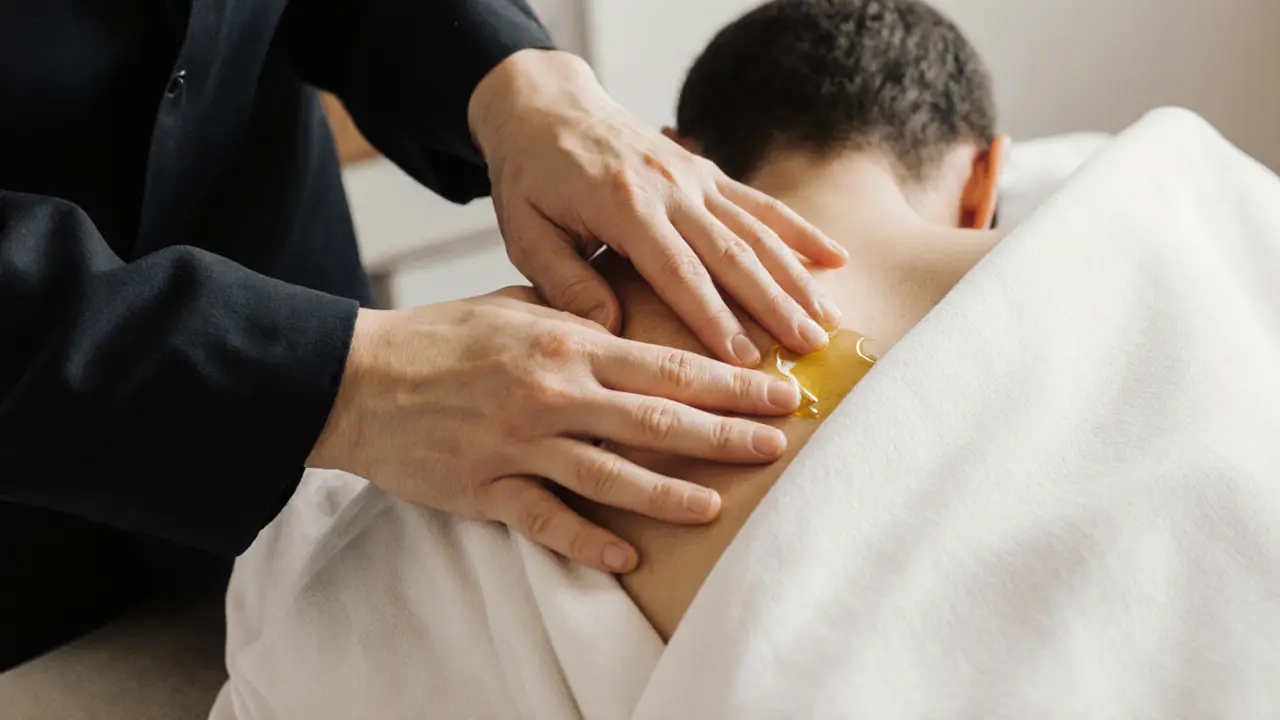
How to Practice or Apply Full-Body Massage
Setting Up for Success
You don’t need to prepare much. Just wear comfortable clothes to the spa. Bring your ID if required. Leave your phone on silent. Think of it like a mini-retreat-your time to disconnect.
Choosing the Right Tools/Resources
Look for spas with licensed therapists. Check if they’re certified by organizations like the American Massage Therapy Association (AMTA) or equivalent in your country. Read reviews-not just the 5-star ones, but the ones that mention professionalism and boundaries.
Avoid places that use vague terms like “sensual massage” or “full-body relaxation with extra attention.” Those are red flags.
Step-by-Step Guide
Here’s how to book your first full-body massage:
- Search for “licensed massage therapist near me” or “professional spa Dubai.”
- Check their website for credentials and service descriptions.
- Call or message to ask: “Do you offer full-body massage with proper draping?”
- Book a 60-minute session to start.
- Arrive 10 minutes early. Fill out the form honestly.
- Communicate your needs during the session.
- Afterward, hydrate and take it easy.
Tips for Beginners or Couples
If you’re nervous, start with a 30-minute session. It’s cheaper and less overwhelming. If you’re going with a partner, opt for a couples massage-you’ll both be in the same room but on separate tables. No shared touching. Just shared calm.
Safety and Ethical Considerations
Choosing Qualified Practitioners/Resources
Never go to a place that doesn’t list therapist credentials. A licensed massage therapist has completed 500+ hours of training and passed a national exam. They’re bound by a code of ethics. Unlicensed “massage” places are often fronts for illegal activity. Don’t risk it.
Safety Practices
Here’s what a safe spa looks like:
| Practice | Purpose | Example |
|---|---|---|
| Draping | Protects privacy | Only exposed area being massaged |
| Consent Check | Ensures comfort | “Is this pressure okay?” |
| Hygiene | Prevents infection | Linens changed between clients |
| Private Room | Ensures safety | No windows, locked door |
Setting Boundaries
You have the right to say no-anytime. If a therapist touches you in a way that makes you uncomfortable, say: “Stop, please.” They must stop immediately. No questions asked. If they argue, get up and leave. Report them.
Contraindications or Risks
Massage isn’t for everyone. Avoid it if you have:
- Recent surgery or injury
- Blood clots or deep vein thrombosis
- Severe osteoporosis
- Open wounds or infections
- High fever or contagious illness
Always tell your therapist about your health. They’re there to help, not harm.
Enhancing Your Experience with Full-Body Massage
Adding Complementary Practices
Pair massage with deep breathing, meditation, or a warm bath afterward. These practices amplify relaxation. Some spas offer aromatherapy or sound therapy as add-ons. Try them once-see how they feel.
Collaborative or Solo Engagement
Massage is deeply personal. You can do it alone, or with a partner in the same room. But never with someone you don’t know in a private setting. Stick to licensed professionals.
Using Tools or Props
At home, use a foam roller or massage gun for minor tension. But these aren’t replacements for professional care. They’re for maintenance-not healing.
Regular Engagement for Benefits
One massage helps. Regular ones transform. Aim for once a month if you’re stressed. Every 2-3 weeks if you have chronic pain. Even quarterly makes a difference. Think of it like brushing your teeth-you don’t wait until your gums bleed.

Finding Resources or Experts for Full-Body Massage
Researching Qualified Experts/Resources
Use directories like the American Massage Therapy Association or your country’s equivalent. Check Google reviews for mentions of “professional,” “respectful,” or “no pressure.” Avoid places with vague descriptions or suggestive photos.
Online Guides and Communities
Look for educational sites from reputable health organizations. Avoid blogs that sell “sensual massage” kits or promote blurred lines. Stick to sources that focus on therapy, not titillation.
Legal or Cultural Considerations
In places like Dubai, massage therapy is regulated and licensed. Only state-approved spas operate legally. Avoid underground or hotel-room services. They’re not just unethical-they’re illegal.
Resources for Continued Learning
Books like The Massage Bible by Sandra K. Sutherland or Essentials of Massage Therapy by William G. Mills offer clear, science-backed info. YouTube channels from licensed therapists (like those from AMTA) are also trustworthy.
FAQ: Common Questions About Full-Body Massage
Does a full-body massage include private areas?
No. A legitimate full-body massage never includes the genitals, breasts, or buttocks. Licensed therapists use draping techniques to ensure full coverage at all times. Any provider who suggests otherwise is not following professional standards. If you’re unsure, ask directly before the session: “Will any private areas be touched?” Their answer should be a clear, confident “no.”
What happens if I get physically aroused during a massage?
It’s more common than you think. The body responds to touch, and relaxation can trigger involuntary reactions. Professional therapists are trained to handle this with zero judgment. They’ll quietly adjust their technique, avoid sensitive areas, and continue as normal. You don’t need to say anything. Just relax. If you’re embarrassed, remember: it’s a physiological response, not a personal one.
Can I request a female or male therapist?
Absolutely. Most spas let you choose based on gender preference. This is normal and respected. Some people feel more comfortable with a female therapist, others with a male. There’s no right or wrong-it’s about your personal comfort. Just let the front desk know when booking. Reputable spas will accommodate you without question.
Is it okay to talk during the massage?
You can talk if you want-but you don’t have to. Some people like to chat to relax, others prefer silence. The therapist will follow your lead. If you’re in pain or need pressure adjusted, speak up. If you’re dozing off, that’s fine too. The goal is your comfort, not conversation.
How often should I get a full-body massage?
It depends on your needs. For stress relief, once a month is ideal. If you have chronic pain or are an athlete, every 2-3 weeks helps. Even once every few months makes a difference. The key is consistency-not intensity. Think of it like watering a plant: regular, gentle care yields the best results.
Conclusion: Why Full-Body Massage is Worth Exploring
A Path to Calm
Full-body massage isn’t a luxury-it’s a form of self-care that’s accessible, safe, and deeply healing. It doesn’t require you to believe in crystals or energy fields. It works because your body responds to touch, pressure, and peace.
Try It Mindfully
Start with one session. Choose a licensed therapist. Ask questions. Set your boundaries. Let yourself relax without guilt. You deserve to feel good.
Share Your Journey
Tried a full-body massage? Share your experience in the comments-what surprised you? What made you feel safe? Your story might help someone else take their first step.
Follow this blog for more honest, no-nonsense guides on wellness, relaxation, and how to take care of your body without the hype.
Some links may be affiliate links, but all recommendations are based on research and quality.
Word count: 1,728
Suggested Images
- A serene spa room with soft lighting, a massage table draped in white linens, and a candle on the side
- A licensed massage therapist in professional attire, gently working on a client’s back while draping is clearly visible
- Close-up of hands applying massage oil to a forearm, with a towel covering the rest of the body
- A person lying comfortably under a sheet, eyes closed, in a peaceful spa setting
- Side-by-side: a client in a robe walking out of a spa smiling, versus a misleading ad for “sensual massage” with red flags crossed out
Suggested Tables
- Comparison of Massage Types (already included)
- Key Benefits of Full-Body Massage (already included)
- Safety Tips for Massage Sessions (already included)


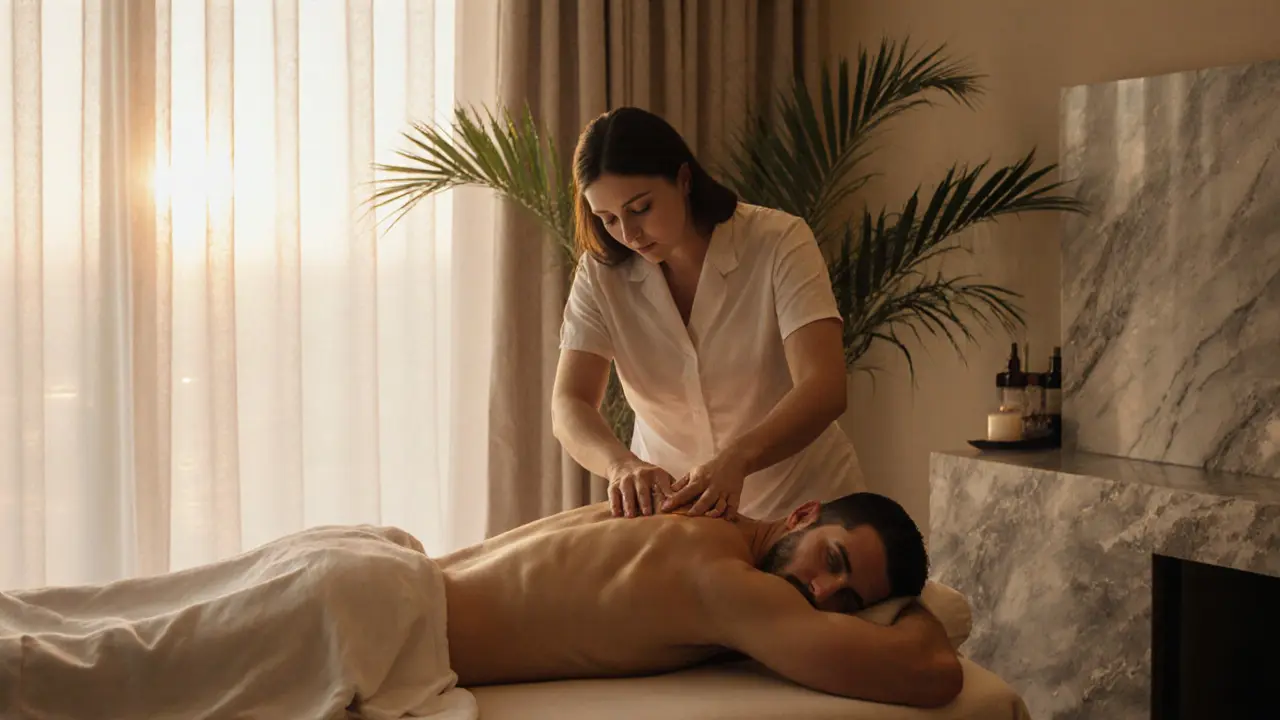
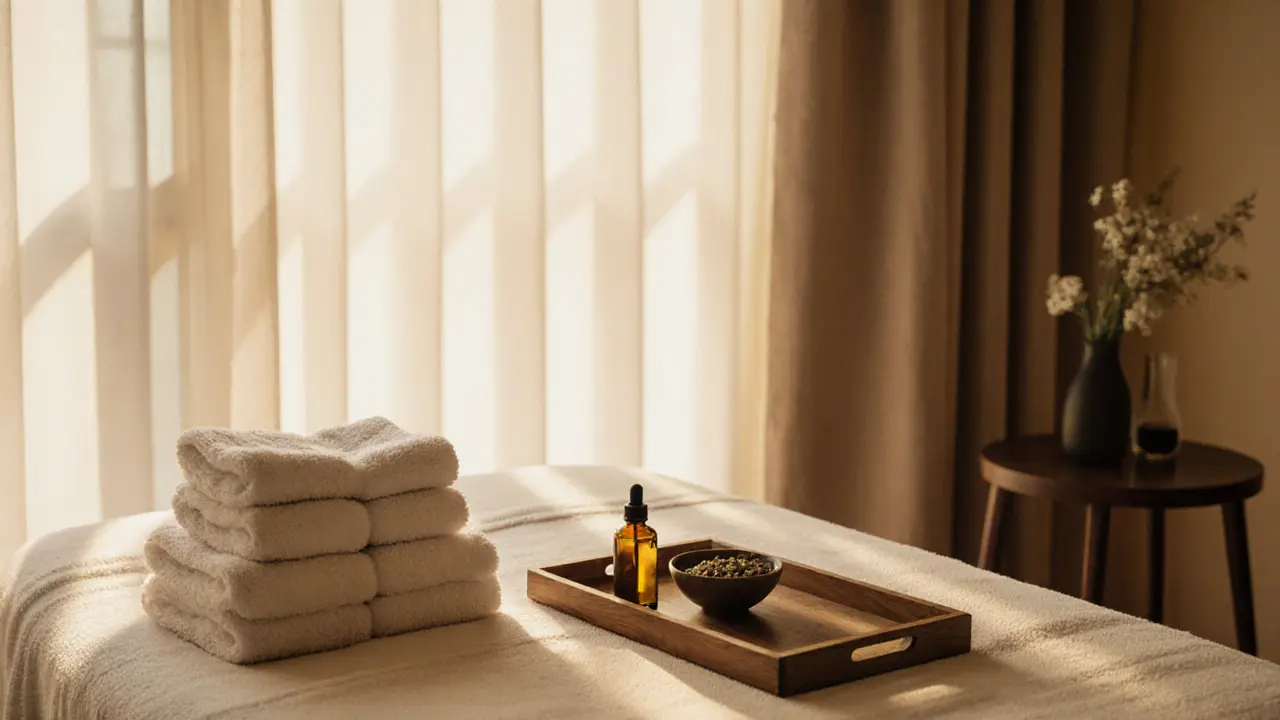
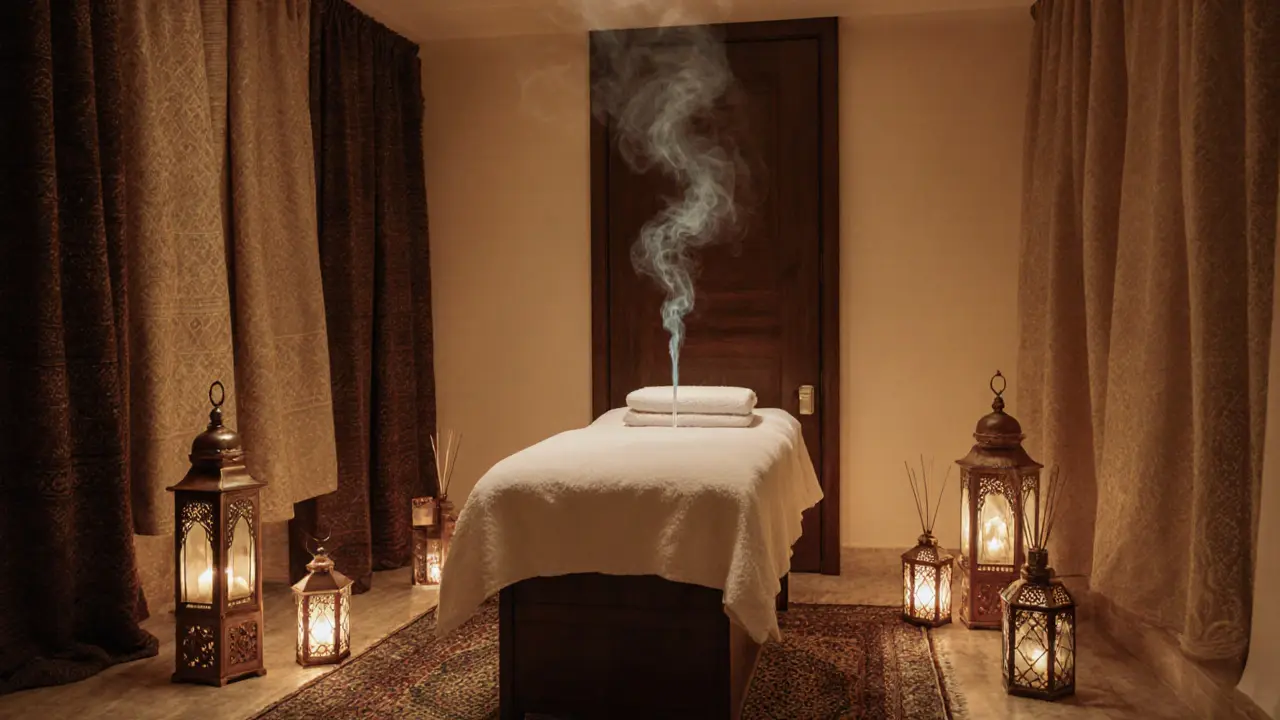


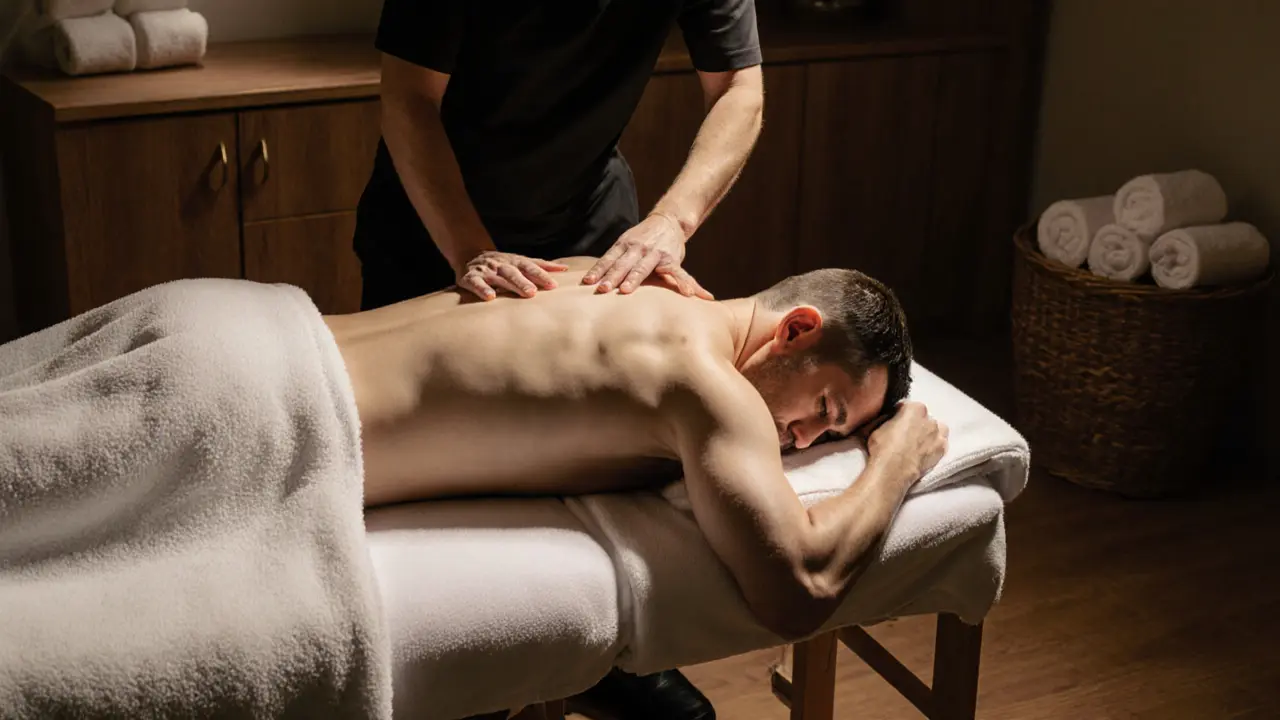
Jeff Shaw
November 26, 2025 AT 02:12OMG I literally cried during my first massage 😭 I was so nervous I thought they’d touch me ‘accidentally’ but the draping? Perfect. The therapist even asked twice if I wanted more pressure. I felt like a queen. If you’re scared, just go. You’ll thank yourself later. 🙌💖